mars2020
Latest

NASA selects a landing site for its Mars 2020 rover
NASA has announced where its next Mars rover will be heading. The agency has chosen Jezero Crater from dozens of potential candidates in part for its potential to have preserved signs of past microbial life. "The landing site in Jezero Crater offers geologically rich terrain, with landforms reaching as far back as 3.6 billion years old, that could potentially answer important questions in planetary evolution and astrobiology," Thomas Zurbuchen, associate administrator for NASA's Science Mission Directorate, said in a statement. "Getting samples from this unique area will revolutionize how we think about Mars and its ability to harbor life."
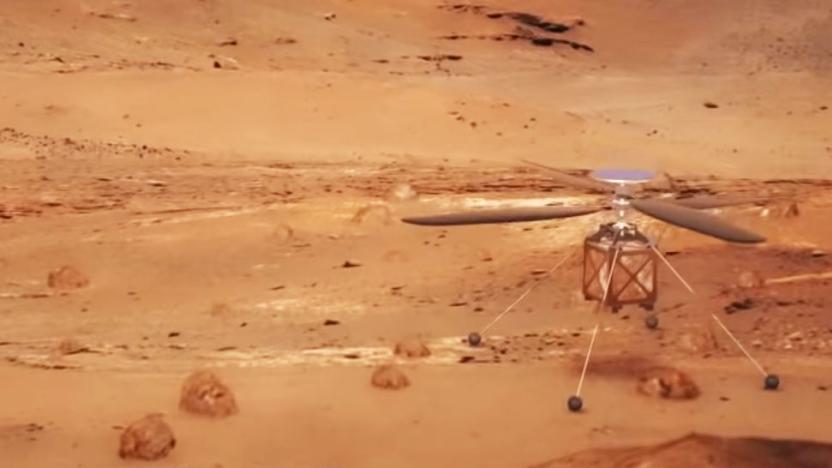
NASA is sending its first autonomous helicopter to Mars in 2020
The next vehicle NASA is sending to Mars nestles somewhere between a rover and a satellite, at least in terms of altitude. The agency is bundling an autonomous helicopter with the Mars 2020 rover to test airborne vehicles on the red planet.
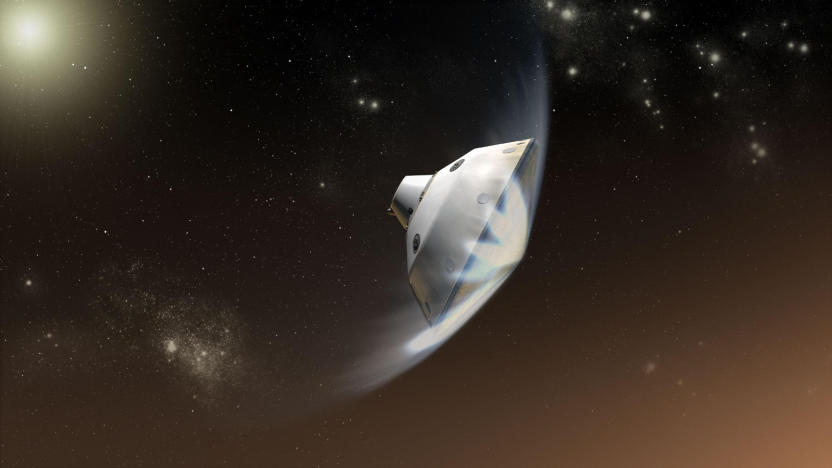
Mars 2020 lander's heat shield cracks in testing
One of Mars 2020's heat shields cracked after a week-long series of tests, and NASA has no choice but to ask Lockheed Martin to build a replacement. The heat shield's purpose is to envelope and protect the Mars 2020 rover and landing system so they don't burn up when they enter the Martian atmosphere. Since the system will have to endure temperatures up to 3,800 degrees Fahrenheit, NASA and Lockheed Martin (its contractor for the mission) subjected the shield to forces up to 20 percent greater than what it'll encounter during entry.

NASA and ESA want to bring Mars soil samples back to Earth
This week, NASA and the European Space Agency (ESA) signed an a letter of intent to collect soil samples from Mars and return them to the Earth. It's important to note that this robotic mission is very preliminary: This isn't an agreement to make this sort of mission happen. Instead, it's just a first step; the next is to study the feasibility of such an endeavor and decide on whether it's worth pursuing, which will happen in 2019.
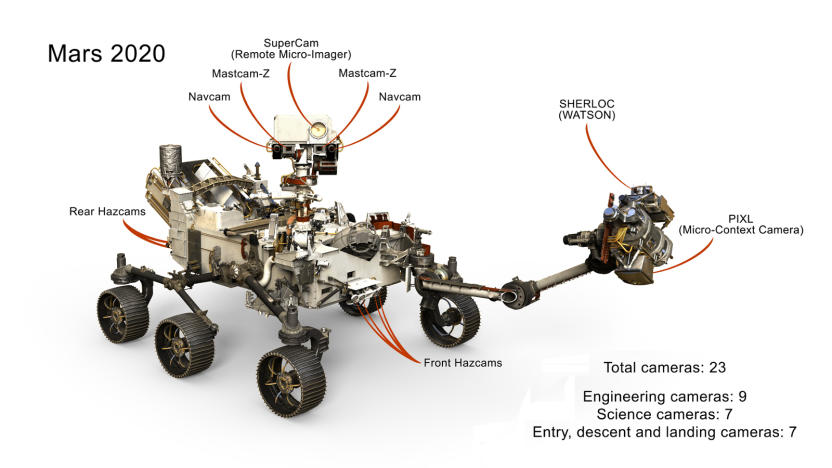
Mars 2020 rover will observe the red planet with 23 eyes
The Mars 2020 rover will be able to show us more of the red planet than any of its predecessors ever did. NASA says the extraterrestrial vehicle will be equipped with 23 cameras, six more than Curiosity's and all a lot more capable. Seven of those "eyes" are tasked with collecting data for scientific experiments, nine are engineering cameras that will keep an eye on its surroundings for navigation and the last seven will capture the rover's descent and landing. Its main camera, however, is Mastcam-Z -- an upgraded version of Curiosity's Mastcam with a 3:1 zoom (hence, "Z") lens the original didn't have.
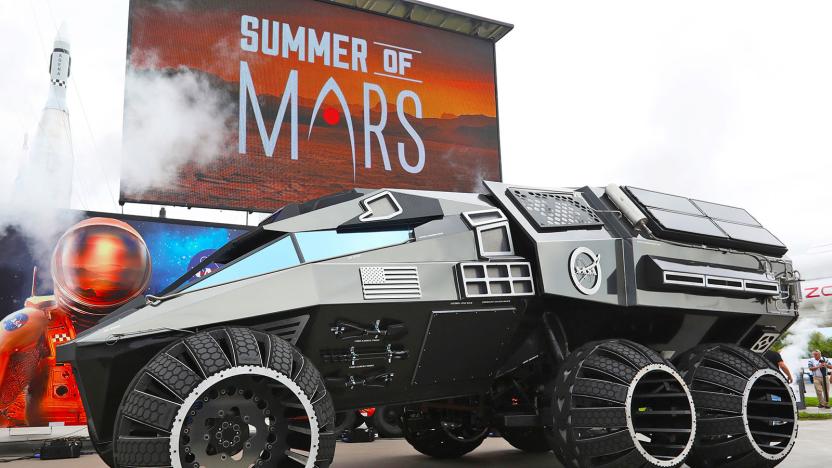
NASA's Mars 2020 concept is perfect for Space Batman
NASA has shown off a futuristic-looking concept of the Mars 2020 rover with a shiny black body and intimidating wheels at the Kennedy Space Center. If you're thinking that it looks like it popped right out of a superhero movie or a shiny video game than an actual vehicle meant to explore the red planet, then you're right. The agency isn't quite done conjuring up a final design for the vehicle: this 28-foot-long machine was actually created as a showpiece for its "Summer of Mars" program. NASA says it might take a couple of elements from this concept, though, perhaps to add a dash of panache to the actual rover.

NASA tests life-detecting tools for Mars in the Atacama Desert
NASA wanted to find out whether the Mars 2020 rover can truly drill for samples and look for signs of life at the same time. So, a team of scientists spent the whole February testing tools using a practice rover called the KREX-2 in one of the driest places on Earth: the Atacama Desert. It's the perfect location to trial instruments NASA plans to use on Mars, since it's as dry as the red planet and under constant assault from ultraviolet radiation. Microbes in the Atacama live underground or inside rocks -- if there's life on Mars, NASA expects to find it in similar locations.

NASA picks three potential drill sites for Mars 2020
When the Mars 2020 rover reaches the red planet, it will quickly begin drilling for samples from its surface. NASA hasn't picked the exact drill site yet, but it has narrowed its choices down to three during a workshop with scientists in Monrovia, California. The group consulted images and data sent by the Mars Reconnaissance Orbiter before voting for easily accessible locations they believe could have supported life. Jezero crater, which got the most votes, was once an ancient lake comparable to Lake Tahoe. It was connected to a large river that fed it water and sediments, making it an ideal site for the rover's search for signs of life.
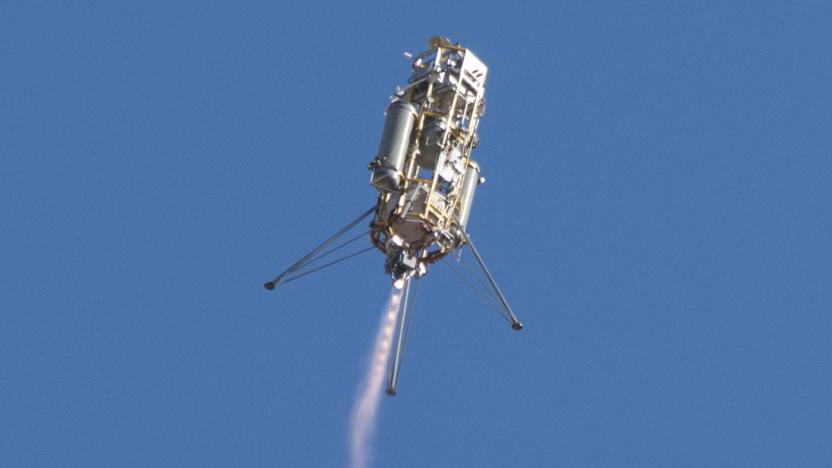
NASA tests Mars 2020 rover's landing camera
The Curiosity and NASA's other Mars rovers had to look for wide-open and flat landing locations to be on the safe side. Mars 2020, however, will have a camera-based navigation system capable of assessing terrains and reacting to potential hazards on the fly, allowing the rover to touch down on complex surfaces its predecessors have yet to explore. That camera is officially called Lander Vision System (LVS), and NASA has recently begun testing its capabilities. The space agency placed it aboard the flight test of an experimental rocket built by Masten Space Systems, a California-based aerospace startup. To be precise, LVS flew as part of a landing technology dubbed the Autonomous Descent and Ascent Powered-flight Testbed.
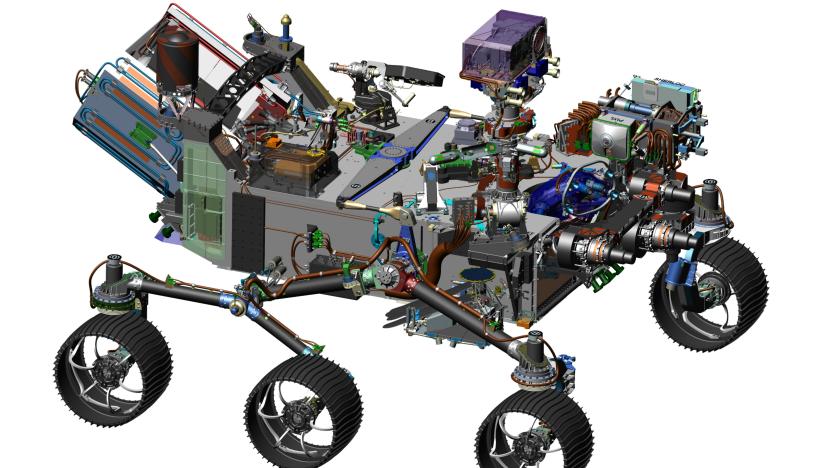
NASA's Mars 2020 rover will search for signs of past life
After building out its next Mars rover in mixed-reality simulations, NASA is ready to announce the near-final design that will depart for the red planet in the summer of 2020. Unlike Curiosity, which is still on its extended tour, the Mars 2020 rover will investigate an area of the planet searching for evidence of past life, with a long-term goal to carefully collect samples of Martian rocks and return them to Earth for further analysis.

An interview with one of NASA's Curiosity Rover engineers
With his Elvis haircut, his fondness for cowboy boots and the way he'll launch into soliloquies about big ideas like how to bend humanity toward collective self-improvement, Adam Steltzner might come off at first as some kind of hipster philosopher. That's one of the things that makes him such a memorable ambassador for NASA, his employer. Steltzner is in fact an engineer with an improbable combination of geek cred and California cool who this October will have spent 25 years working at NASA's Jet Propulsion Laboratory. He looks like a rock star -- plays bass guitar, in fact -- and can forcefully insist on humanity's imperative to explore the stars and to press against the limits of the known universe with little prompting.

Mars 2020 rover will give us a way to know the red planet better
NASA's been planning for the Mars 2020 rover for a long time now, back when Curiosity was just making its way to the red planet. Now, the agency has finally chosen seven scientific instruments that'll be equipped on the new rover out of the 58 proposals submitted by researchers from all over the globe. These instruments were chosen based on their potential to discover how humans can live off the extraterrestrial land by using the natural resources available, and also by their capacity to unearth any danger posed by Martian dust to future human explorers.



